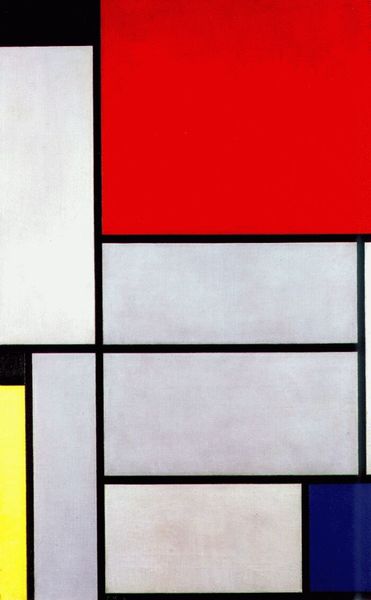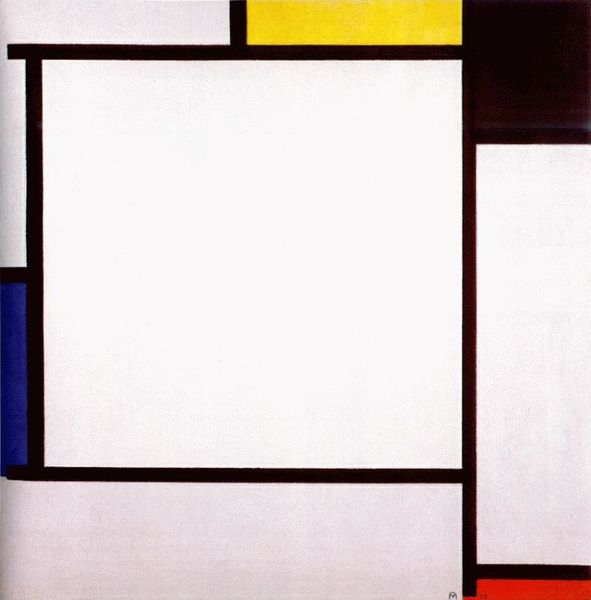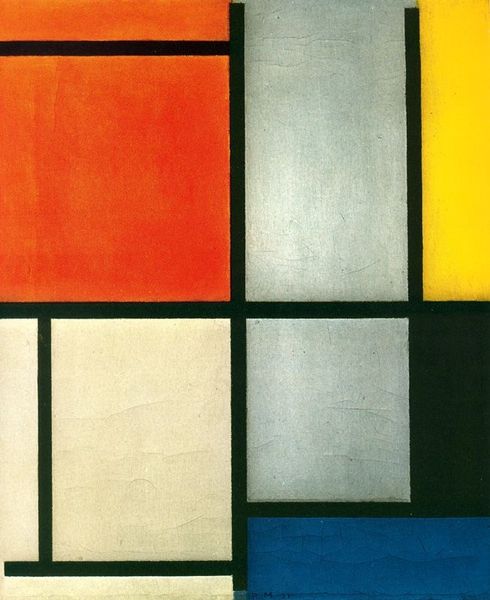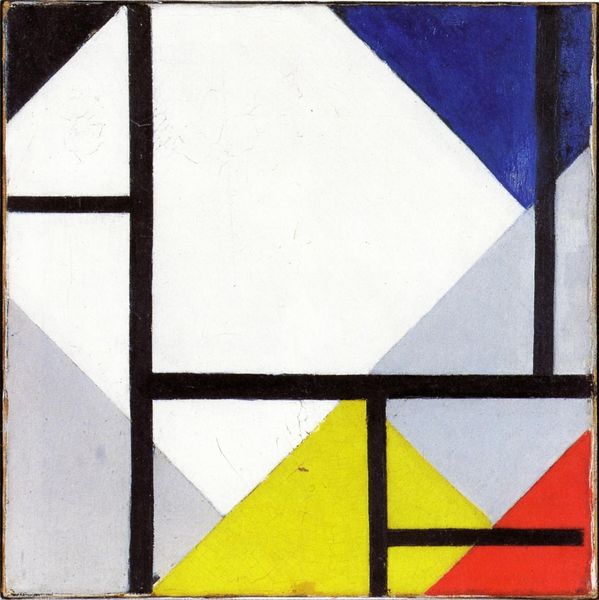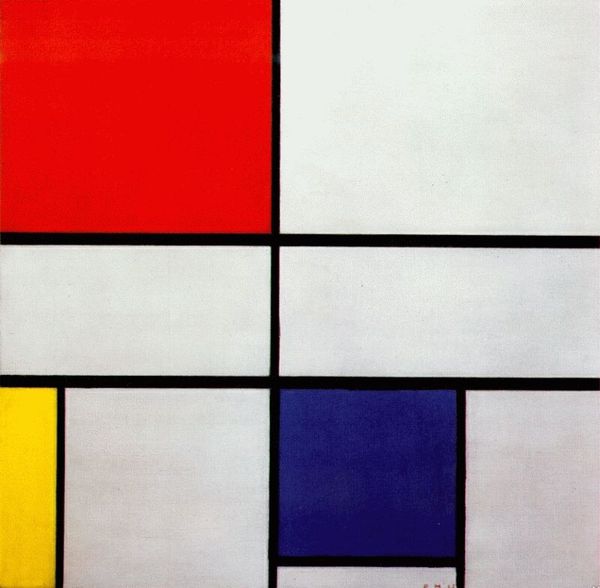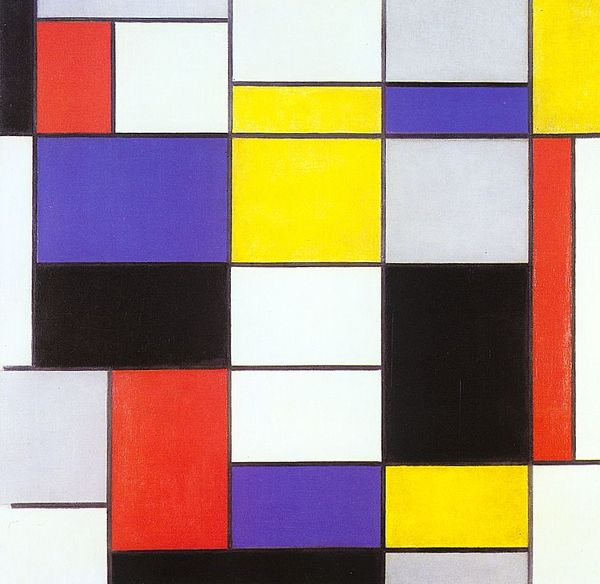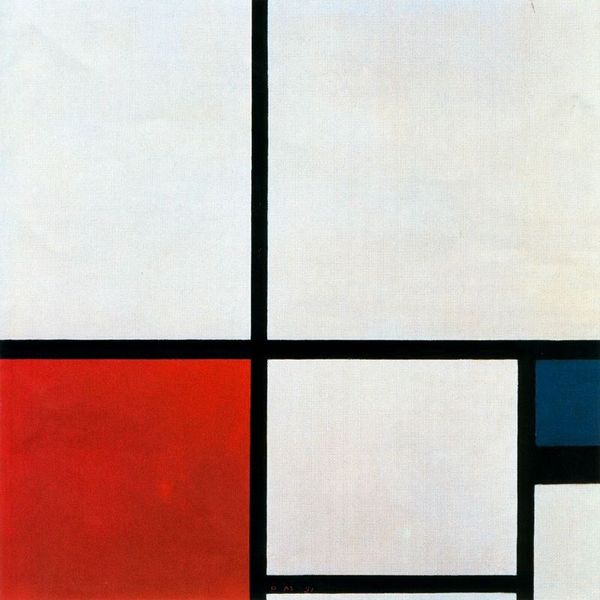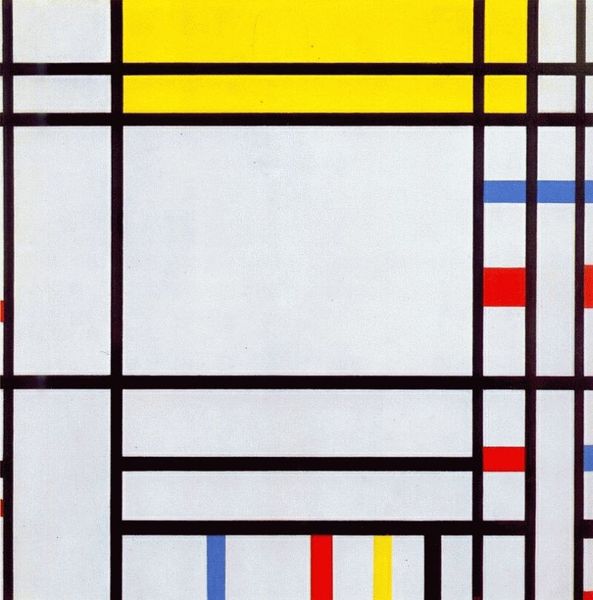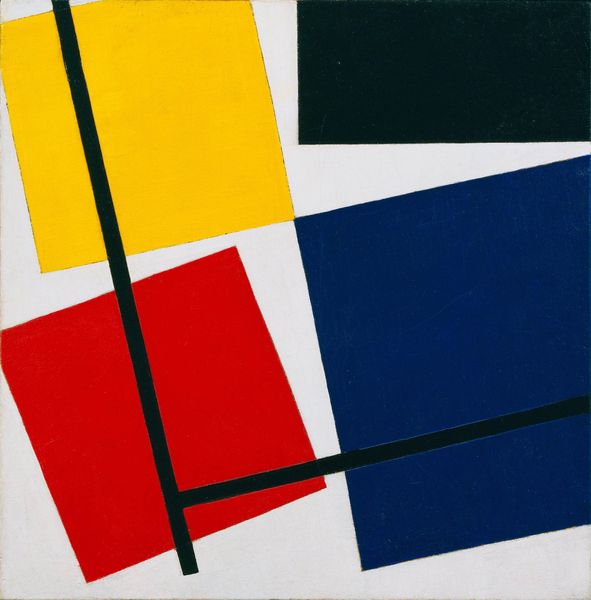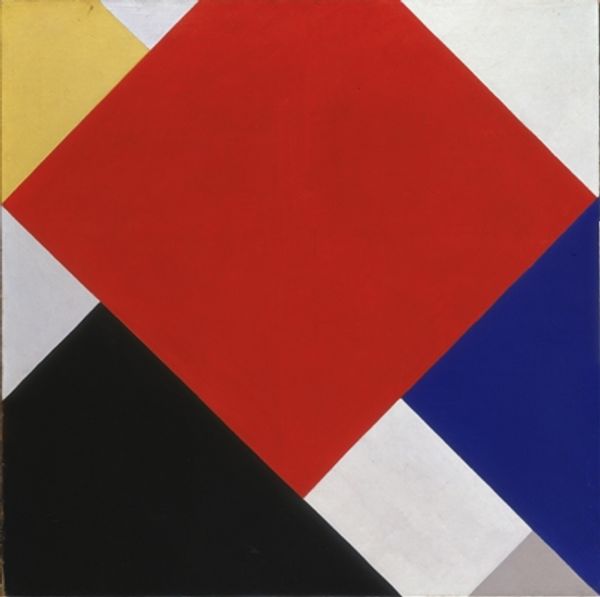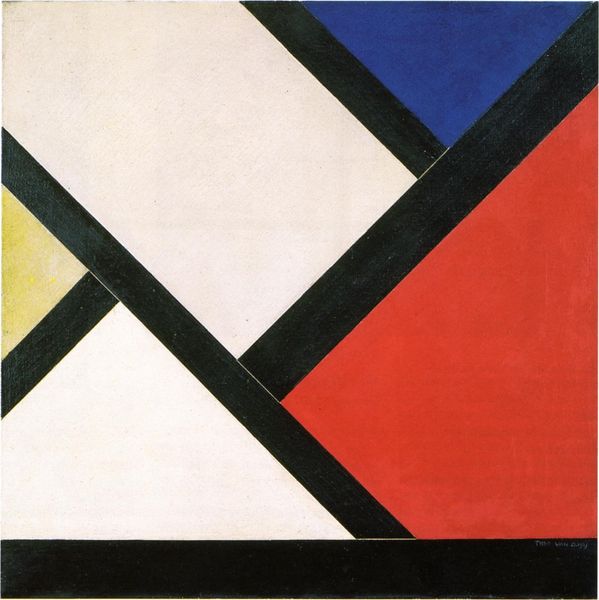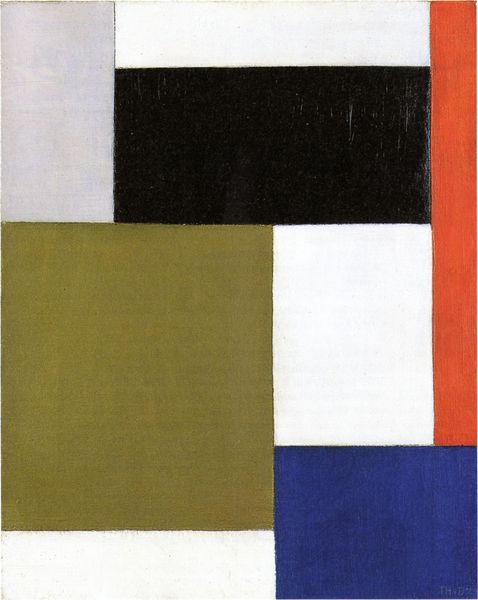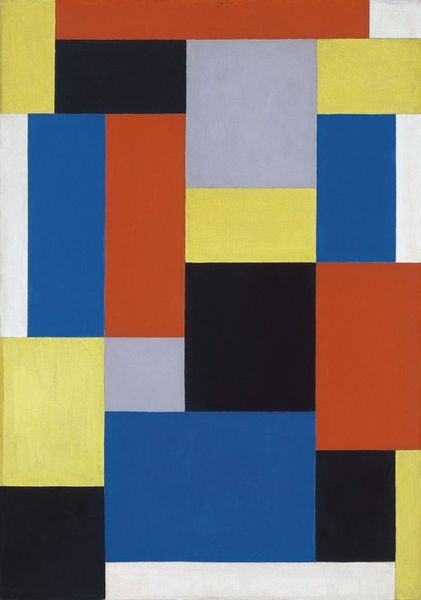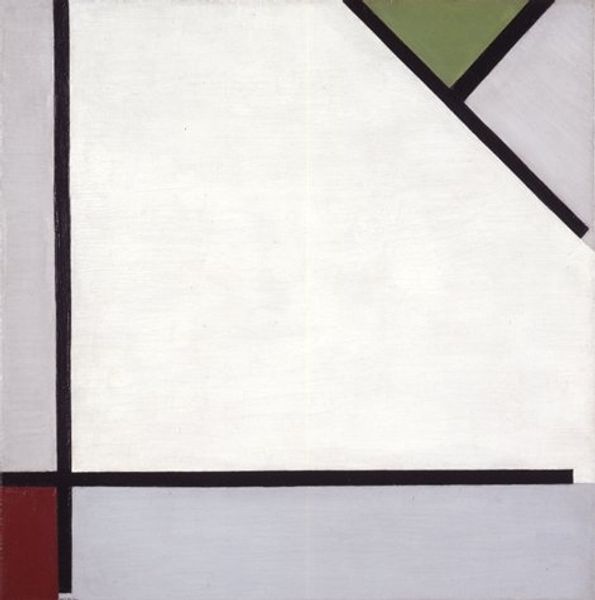
painting, oil-paint
#
de-stijl
#
neo-plasticism
#
abstract painting
#
painting
#
oil-paint
#
geometric pattern
#
geometric-abstraction
#
abstraction
#
line
#
modernism
Dimensions: 86 x 66 cm
Copyright: Public domain
Piet Mondrian created "Composition with Red, Blue, and Yellow" using oil on canvas. Mondrian was a Dutch artist whose radical simplification of painting reflected his search for fundamental, universal principles. In the early 20th century, Europe was undergoing massive changes. Traditional social structures were being questioned and new ideologies developed. Mondrian, influenced by spiritual and philosophical movements like Theosophy, sought to represent a harmonious, utopian vision through his art. He developed a non-representational style called neoplasticism, characterized by the use of primary colors, black lines, and geometric forms. This wasn't just about aesthetics; Mondrian believed that by stripping away the particulars of the world, he could reveal a deeper, spiritual reality. He wanted his art to reflect an ideal of balance and order, as he said, a "true vision of reality." Consider how this pursuit of universal harmony might also be a response to the chaos and fragmentation of modern life. How might Mondrian's emotional and personal quest for harmony translate into a broader commentary on society?
Comments
No comments
Be the first to comment and join the conversation on the ultimate creative platform.
